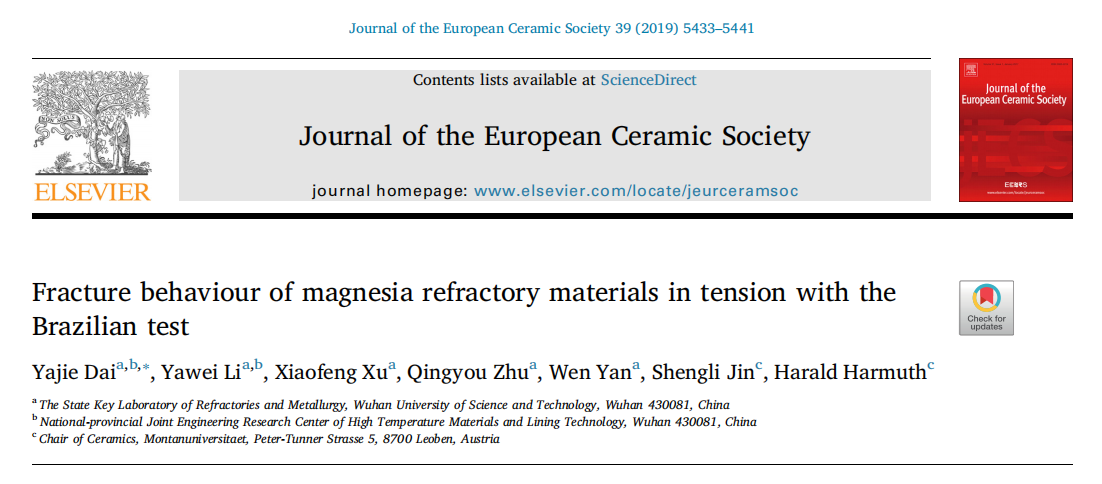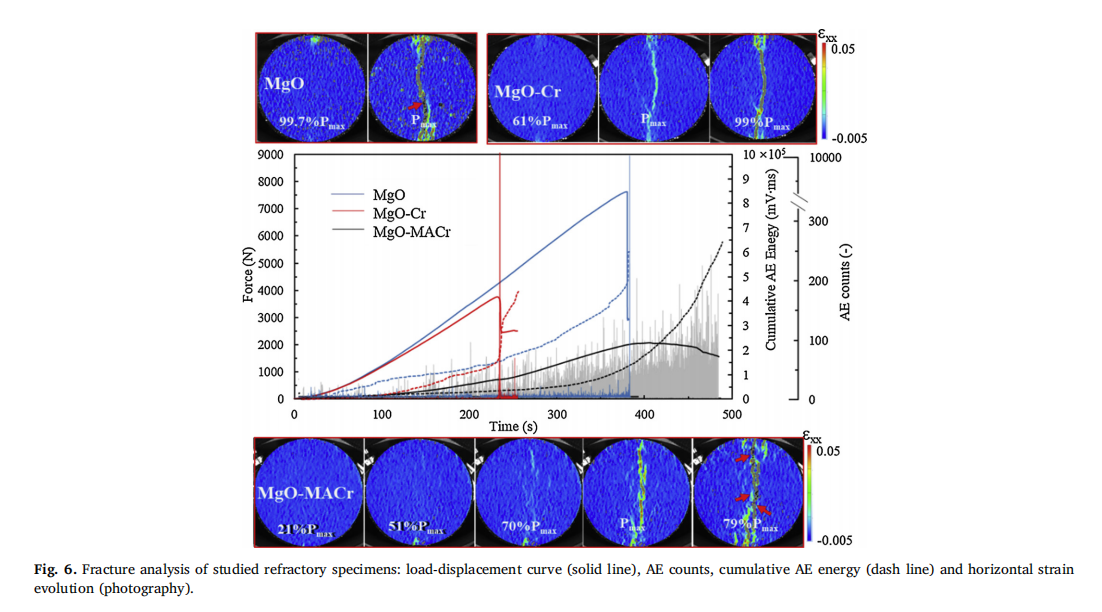The latest research result of the team was published in Journal of the European Ceramic Society (IF=4.029)

In this work, the tensile failure of magnesia, rebound magnesia-chrome and chrome-containing magnesia-spinel refractories under the Brazilian test were investigated. The digital image correlation and acoustic emission were applied simultaneously for ensuring the validity of Brazilian test and studying the fracture process. The brittle refractories fail abruptly while reaching their load peaks because of the unstable crack propagation. However, the chrome-containing magnesia-spinel refractory shows a reduced brittleness due to the pre-existing micro-cracks, which promotes quasi-stable crack propagation evidenced by the nonlinearity in the pre-peak region and the softening in the post-peak region. Besides, the thickness-to-diameter ratio has a great influence on the fracture behaviour, which also shows bittleness dependence. The fracture behaviour of rebound magnesia-chrome refractory varies from brittle to less brittle while the thickness increasing from 10 mm to 50 mm. The quasi-stable crack propagation favors the central crack initiation and ensures the tensile failure under the Brazilian test.

Paper link: https://www.sciencedirect.com/science/article/pii/S0955221919305138
Paper:  Fracture behaviour of magnesia refratory materials in tension with the Brazilian test.pdf
Fracture behaviour of magnesia refratory materials in tension with the Brazilian test.pdf
